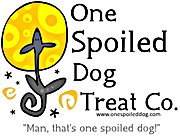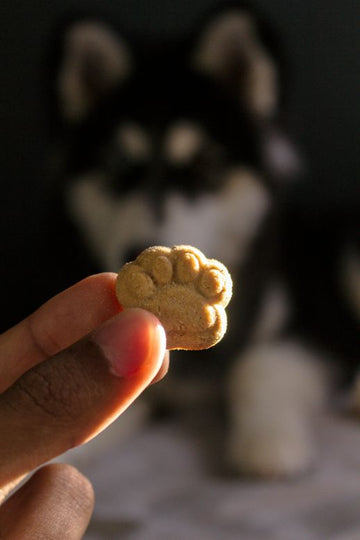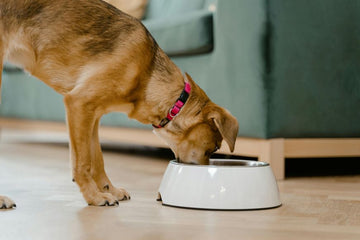Every dog owner wants their furry friend to live a long, healthy, and happy life. Nutrition is a cornerstone of that goal, and finding the right balance between meals and treats is critical. While meals provide the foundation for your dog’s dietary needs, treats play an important supplementary role, if managed appropriately. Overindulgence in treats can lead to weight gain, health issues, and nutritional imbalances. However, when used thoughtfully, treats can be a rewarding and beneficial part of your dog’s diet.
The Role of Meals in Canine Nutrition
Dog meals are carefully formulated to provide the essential nutrients your pet needs for energy, growth, and overall health. These meals, whether dry kibble, wet food, or homemade, should deliver a balanced mix of:
- Protein: Supports muscle development and immune health.
- Healthy fats: Provide energy and promote skin and coat health.
- Carbohydrates: Offer additional energy and aid digestion.
- Vitamins and minerals: Play a key role in bone health, immunity, and overall wellness.
A nutritionally complete and well-balanced meal ensures that your dog’s core dietary requirements are met. Meals tailored to your dog’s breed, age, activity level, and health conditions set the foundation for their optimal health.
Why Treats Matter
Treats serve a different purpose than meals, often acting as tools for training, motivation, or bonding. They can also provide additional nutrients, depending on their composition. Healthy treats may include ingredients like lean proteins, vegetables, and whole grains, or be fortified with extras such as:
- Omega-3 fatty acids: For skin, coat, and brain health.
- Glucosamine and chondroitin: To support joint health.
- Probiotics: For improved digestion.
Treats can enhance your dog’s diet but should never replace nutritionally complete meals. Moderation and thoughtful selection are key to ensuring treats remain a positive and healthy part of your dog’s life.
The Importance of Moderation
While treats are enjoyable for your dog, overindulgence can lead to:
- Weight gain: Even small treats can add up, contributing to excess calories.
- Digestive upset: Too many treats, especially rich ones, can cause stomach issues.
- Nutritional imbalances: Treats are not designed to replace the comprehensive nutrition of meals.
To maintain balance, treats should account for no more than 10% of your dog’s daily caloric intake. For example, if your dog requires 500 calories per day, treats should contribute no more than 50 calories.
How to Balance Treats and Meals
1. Focus on Nutrient-Dense Meals
Ensure your dog’s primary meals are high-quality, providing all essential nutrients. If their meals are balanced and tailored to their needs, you’ll have greater flexibility in managing treats without worrying about deficiencies.
2. Reserve Treats for Training and Special Occasions
Treats are most effective when used strategically, such as during training sessions or as rewards for good behavior. By limiting treats to specific situations, you can prevent overfeeding while making the treat feel more meaningful to your dog.
3. Choose Healthy, Low-Calorie Treats
Look for treats that are:
- Low in calories: To avoid exceeding your dog’s daily caloric needs.
- Made with natural ingredients: Such as lean meats, vegetables, and grains.
- Specialized for health needs: Dental chews, hypoallergenic treats, or those with added joint support can provide additional benefits.
Examples of healthy, low-calorie treats include:
- Carrot sticks
- Apple slices (without seeds)
- Blueberries
- Freeze-dried meat bites
4. Adjust Meal Portions
If you give your dog treats during the day, reduce their meal portions accordingly. For example, if your dog receives 20 calories’ worth of treats, deduct those 20 calories from their meals.
5. Track Treats and Monitor Weight
Keep a log of treats given throughout the day to ensure you’re staying within the recommended caloric limits. Regularly weigh your dog to monitor for weight gain or loss and adjust their diet as needed.
Signs You May Be Overdoing Treats
It’s easy to lose track of how many treats you’re giving. Be mindful of the following signs that you may need to cut back:
- Weight gain: Gradual or sudden increases in weight.
- Reduced energy: Overfeeding can lead to lethargy and reduced activity levels.
- Digestive upset: Too many treats can cause irregular bowel movements or an upset stomach.
- Reluctance to eat meals: If your dog prefers treats over their regular food, it may indicate overindulgence.
Healthy Habits for Treat-Giving
-
Use Small Portions
Dogs don’t need large treats to feel rewarded. Break treats into small pieces to reduce calorie intake while maintaining motivation. -
Offer Fresh Alternatives
Incorporate fresh, dog-safe snacks like vegetables and fruits as treats. They’re low in calories and offer additional nutrients. -
Stick to a Routine
Give treats at consistent times, such as during training or after a task well done, to reinforce positive behavior without encouraging begging. -
Limit Human Food
Avoid giving table scraps or foods not specifically designed for dogs, as these can disrupt their diet and contribute to excessive calorie intake.
Conclusion
Balancing treats and meals is vital for maintaining your dog’s health, weight, and overall well-being. Treats can be a valuable part of your dog’s routine when used in moderation and as a supplement to a nutrient-dense diet. By prioritizing high-quality meals, choosing healthy treats, and adjusting portions as needed, you can ensure your dog enjoys both their snacks and optimal health.
With mindful choices and a little planning, you can keep treats a positive and healthy part of your dog’s life, enhancing their happiness while supporting their longevity.




